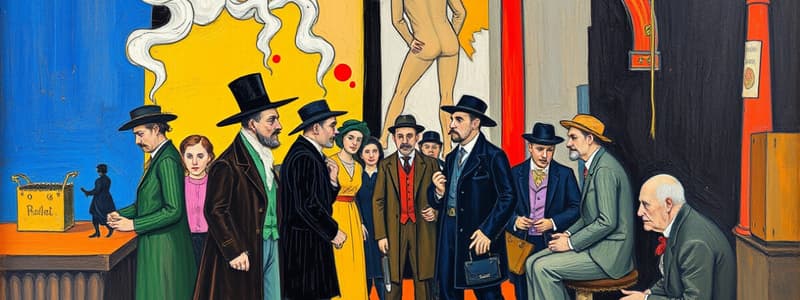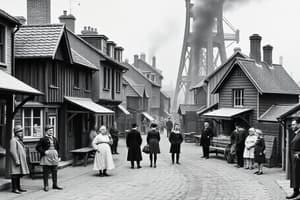Podcast
Questions and Answers
How had the social order changed by the late 1800's?
How had the social order changed by the late 1800's?
By the late 1800's, three social classes emerged: a new upper class of very rich business families, a growing middle class of mid-level professionals, and a lower middle class of teachers and office workers.
What were the arguments against women's suffrage?
What were the arguments against women's suffrage?
Critics claimed women were too emotional to vote, needed protection from grubby politics, or that their place was in the home.
Why did more children attend school in the late 1800's than before?
Why did more children attend school in the late 1800's than before?
The quality of elementary education improved, teachers received training, and schooling for children aged five to ten became compulsory in England.
How did science begin to challenge existing beliefs in the late 1800's?
How did science begin to challenge existing beliefs in the late 1800's?
Flashcards are hidden until you start studying
Study Notes
Social Order Changes by the Late 1800s
- Emergence of three distinct social classes in Europe: a wealthy upper class, a growing middle class, and a lower middle class.
- The upper class comprised affluent business families who gained wealth from industrialization.
- Nobility relied on the financial power of industrialists to maintain their lifestyles and lands.
- The middle class included mid-level business professionals, doctors, and scientists, improving their social status.
- The lower middle class encompassed teachers and office workers, reflecting upward mobility within society.
Arguments Against Women's Suffrage
- Critics argued that women were too emotional for responsible voting.
- Concerns existed regarding the need to "protect" women from the political sphere, emphasizing traditional gender roles.
- The belief was propagated that a woman's primary responsibility lay within the home, excluding them from government involvement.
Increased School Attendance in the Late 1800s
- Significant improvements in elementary education quality facilitated greater school attendance.
- Training for teachers was formalized with the establishment of Normal Schools, beginning in France in 1879.
- Compulsory education laws were enacted in England post-1881, mandating schooling for boys and girls aged five to ten.
Science Challenging Existing Beliefs
- Late 1800s saw significant scientific discoveries that contradicted traditional beliefs.
- The theory of Darwinism proposed that humans evolved from primitive apes, challenging the biblical creation narrative.
- Educators began disseminating these scientific ideas, leading to changes in public perception and belief systems.
Studying That Suits You
Use AI to generate personalized quizzes and flashcards to suit your learning preferences.




